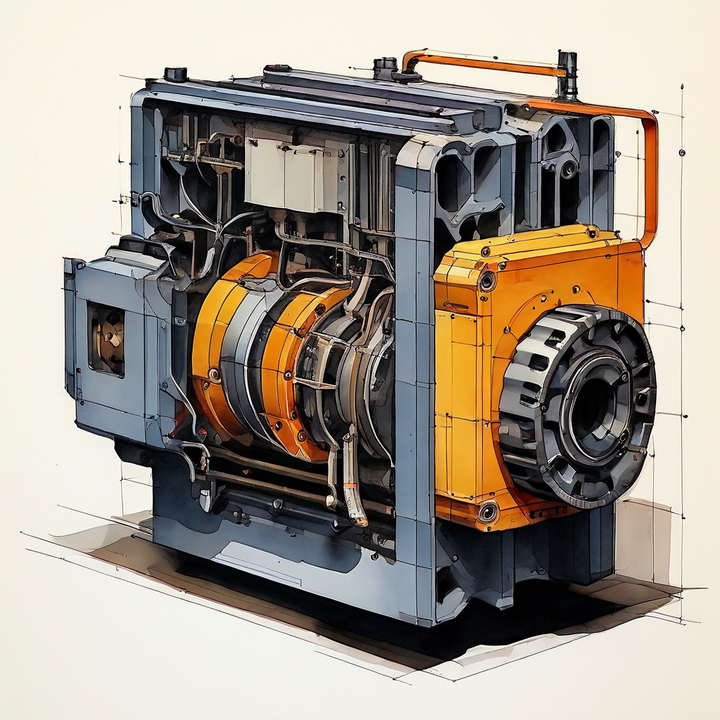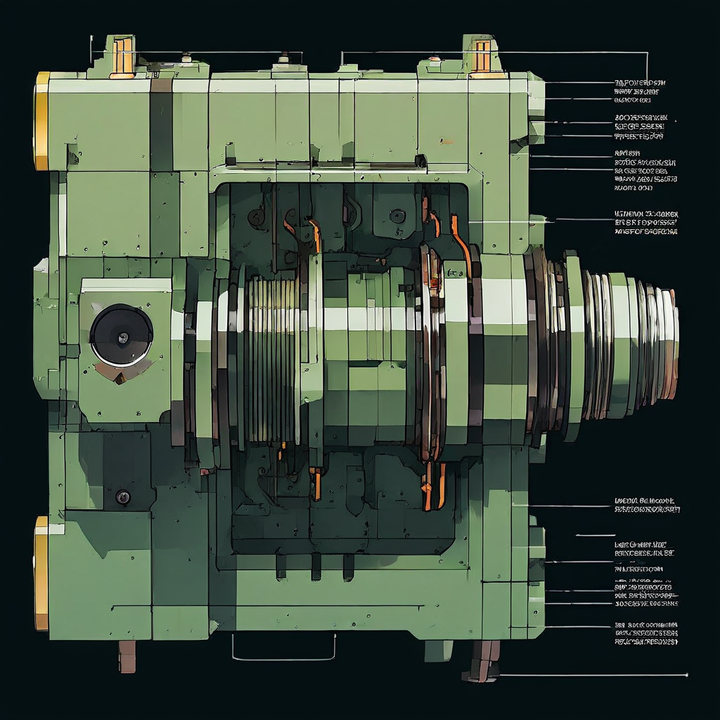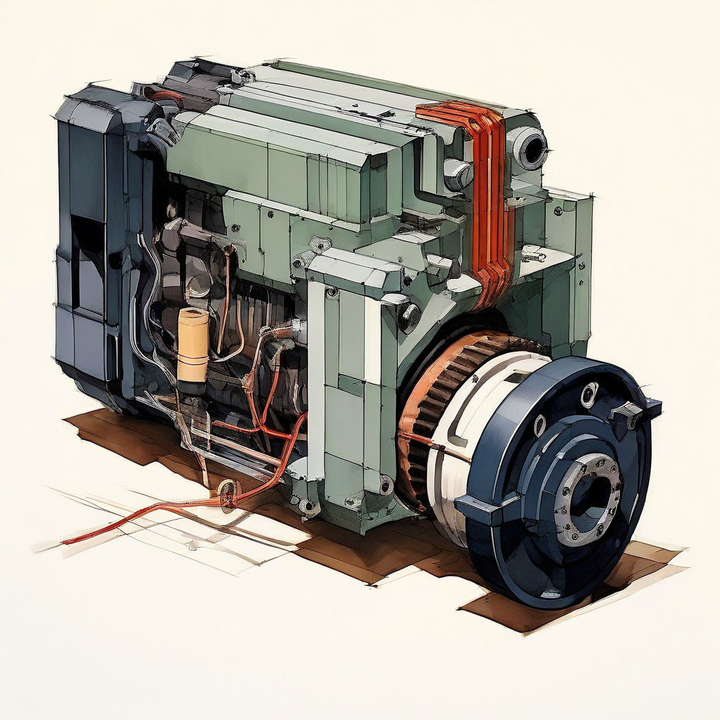


The Diagnostic Trouble Code (DTC) P03ED indicates an issue with the "A" Camshaft Profile Actuator C Control Circuit Low on Bank 1. This code is specific to the camshaft profile actuator, which is responsible for adjusting the camshaft timing to optimize engine performance, fuel efficiency, and emissions.
Before we delve into the intricacies of the P03ED code, let's take a moment to understand the camshaft profile actuator system. This ingenious piece of engineering is responsible for optimizing the engine's performance by adjusting the camshaft profile, which in turn alters the valve timing and lift. It's a crucial component of modern variable valve timing (VVT) systems, allowing the engine to adapt to different driving conditions and achieve better fuel efficiency, power delivery, and emissions control.
| Component | Function |
|---|---|
| Camshaft Profile Actuator | Adjusts the camshaft profile to optimize valve timing and lift |
| Variable Valve Timing (VVT) System | Manages the camshaft profile actuator to adapt to driving conditions |
| Engine Control Module (ECM) | Monitors and controls the camshaft profile actuator system |
The camshaft profile actuator system is a complex and intricate mechanism that relies on precise coordination between various components, including the camshaft profile actuator itself, the VVT system, and the Engine Control Module (ECM).
As with any complex system, the camshaft profile actuator relies on proper maintenance to function correctly. One of the most common causes of the P03ED code is a lack of proper oil maintenance. Neglecting regular oil changes or using the wrong oil specification can lead to contamination and sludge buildup, which can wreak havoc on the delicate components of the camshaft profile actuator system.
I can't stress enough the importance of following your vehicle's recommended oil change intervals and using the correct oil specification. It's a simple yet crucial step that can save you from costly repairs down the line.
| Maintenance Task | Importance |
|---|---|
| Regular Oil Changes | Prevents contamination and sludge buildup |
| Correct Oil Specification | Ensures compatibility with the camshaft profile actuator system |
| Proper Driving Habits | Avoids excessive wear and tear on the system |
When the dreaded P03ED code rears its ugly head, it's time to roll up our sleeves and get to work. As a mechanic, I follow a systematic approach to diagnose and troubleshoot this issue. Here are the steps I typically take:
The first step is to perform a thorough visual inspection of the camshaft profile actuator system. I look for any signs of physical damage, stuck components, or leaks that could be causing the issue. Sometimes, a simple stuck valve or solenoid can be the culprit, and addressing it can resolve the problem.
Check for physical damage
Inspect for stuck components
Look for leaks or signs of contamination
Next, I turn my attention to the wiring and connectors associated with the camshaft profile actuator system. Broken, damaged, or loose wiring connections can cause communication problems with the Engine Control Module (ECM), leading to the P03ED code. I meticulously inspect each wire and connector, using electrical contact cleaner if needed, to ensure a solid connection.
Inspect wiring harnesses for damage or breaks
Check connectors for corrosion or looseness
Use electrical contact cleaner to clean connections
While the P03ED code is the main focus, I always scan for additional trouble codes that may provide valuable clues about the underlying issue. Sometimes, a related code can shed light on a broader problem, such as a faulty ECM or a sensor issue, which can help streamline the diagnostic process.
Scan for additional diagnostic trouble codes (DTCs)
Research related codes for potential root causes
Analyze the combination of codes for a comprehensive diagnosis
Once the root cause of the P03ED code has been identified, it's time to roll up our sleeves and get to work. Depending on the specific issue, repairs may involve replacing components like the camshaft profile actuator solenoid, VVT actuator, camshaft and crankshaft sensors, or even the ECM itself.
| Potential Repair | Description |
|---|---|
| Replace Camshaft Profile Actuator Solenoid | Addresses issues with the actuator itself |
| Replace VVT Actuator | Resolves problems with the variable valve timing system |
| Replace Camshaft/Crankshaft Sensors | Ensures proper communication with the ECM |
| Replace Engine Control Module (ECM) | Addresses ECM-related issues or failures |
In some cases, wiring repairs or replacements may be necessary to restore proper communication and functionality. After the repairs are completed, it's crucial to follow the manufacturer's recommended procedures to reset or relearn the camshaft profile actuator system, ensuring it operates as intended.
As the saying goes, "an ounce of prevention is worth a pound of cure." To avoid encountering the P03ED code and other related issues, I always emphasize the importance of preventive maintenance to my customers.
Regular oil changes
Proper driving habits (avoiding excessive idling or high-load conditions)
Periodic inspections
Regular oil changes, proper driving habits (avoiding excessive idling or high-load conditions), and periodic inspections can go a long way in keeping your camshaft profile actuator system in top shape.
Let's be honest – repairs can be costly, especially when it comes to complex systems like the camshaft profile actuator. The cost can vary significantly depending on the specific components that need to be replaced.
Replacing sensors or wiring harnesses: $200 - $500
Replacing camshaft profile actuator solenoid or VVT actuator: $300 - $800+
Replacing Engine Control Module (ECM): $1,000+
While replacing sensors or wiring harnesses may be relatively affordable, replacing the camshaft profile actuator solenoid, VVT actuator, or even the ECM can quickly add up to hundreds or thousands of dollars.
As a mechanic, I always strive to provide my customers with transparent and accurate cost estimates based on their vehicle's specific needs. It's essential to weigh the repair costs against the overall value of the vehicle and make an informed decision.
The P03ED code may seem daunting at first, but with the right knowledge and approach, it's a challenge that can be overcome. As a mechanic, I've seen my fair share of camshaft profile actuator issues, and I can confidently say that a combination of proper maintenance, thorough diagnostics, and skilled repairs can often resolve this problem.
Remember, preventive maintenance is key to avoiding costly repairs and ensuring your vehicle's longevity. So, keep up with those oil changes, drive responsibly, and don't hesitate to seek professional help when needed. Your camshaft profile actuator system, and your wallet, will thank you!
The camshaft profile actuator system adjusts the camshaft profile to optimize valve timing and lift, allowing the engine to adapt to different driving conditions for better performance and efficiency.
Common symptoms include rough idling, decreased fuel efficiency, reduced engine power, and the illumination of the check engine light with the P03ED code.
Yes, a stuck valve or solenoid in the camshaft profile actuator system can prevent proper operation and trigger the P03ED code.
Broken, damaged, or loose wiring connections to the camshaft and crankshaft sensors can cause communication problems with the Engine Control Module (ECM), resulting in the P03ED code.
Using the wrong oil specification or contaminated oil can cause malfunctions in the hydraulic systems, including the camshaft profile actuator, leading to potential issues and the P03ED code.
Scanning for additional trouble codes can provide valuable clues about related issues or root causes, helping streamline the diagnostic process and identify the underlying problem more accurately.
Yes, a faulty ECM may not be able to properly control or monitor the camshaft profile actuator system, resulting in the P03ED code.
After repairs, following the manufacturer's recommended procedures to reset or relearn the camshaft profile actuator system is crucial to ensure it operates as intended and to prevent potential issues from recurring.
Excessive idling or high-load conditions can contribute to oil contamination or sludge buildup, which can affect the delicate components of the camshaft profile actuator system and potentially lead to issues like the P03ED code.
Repairs for complex systems like the camshaft profile actuator can be costly, so it's important to weigh the repair costs against the overall value of the vehicle to make an informed decision about whether to proceed with the repairs or consider alternative options.

Miguel started tinkering with car radios as a teenager, fascinated by the intricate dance of wires and circuits. This passion led him to pursue a career as an automotive electrician. For the past 10 years, Miguel has tackled everything from flickering headlights to mysterious electrical gremlins. He thrives on troubleshooting electrical problems and enjoys sharing his knowledge to empower car owners to understand their vehicles better.



